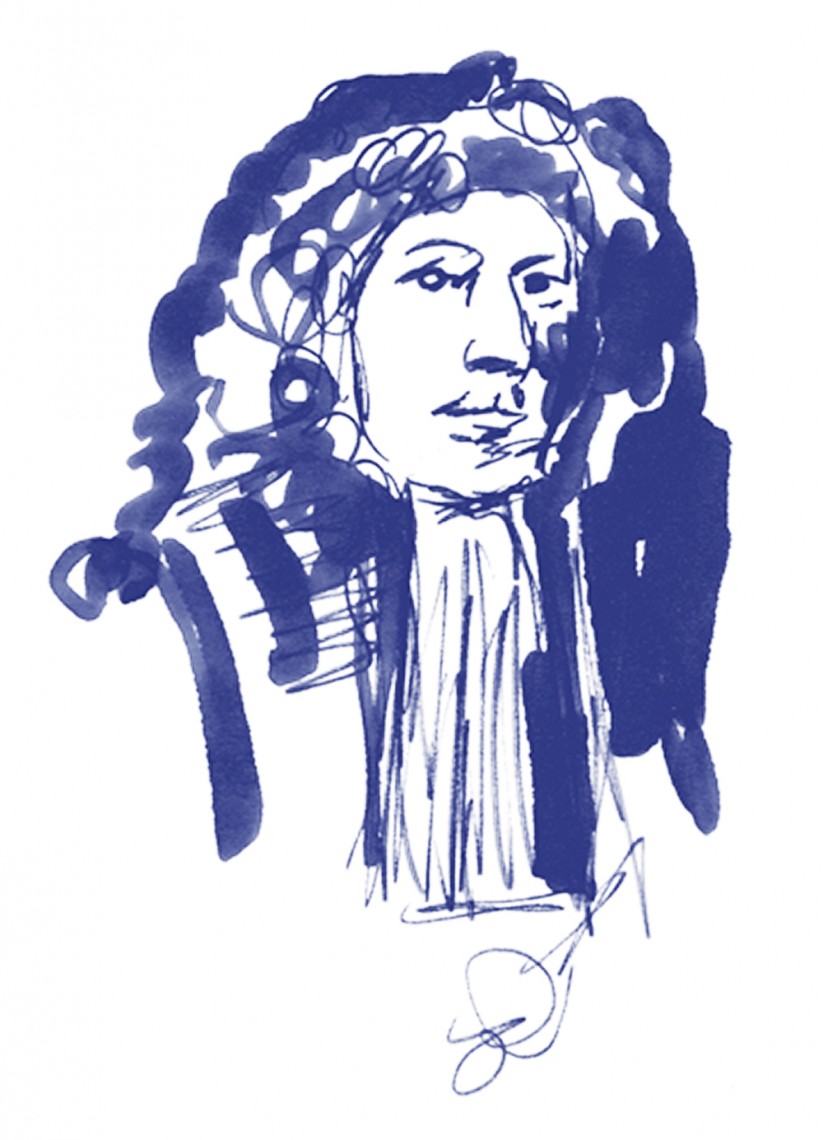
Toronto Consort, with guest Director, theorbist Lucas Harris. February 7-8, Trinity-St. Paul’s Centre.
So what was music like in the Austrian court, back in the 1600s? Turns out, it was really quite marvellous – according to the evidence presented in the Toronto Consort’s program at Trinity-St. Paul’s United Church on Friday night.
The concert was called “Splendours of the Emperor’s Chapel,” and it was created by Lucas Harris – well known to early music audiences in Toronto as the theorbist in the Tafelmusik Orchestra. For this occasion, he assembled a mixed choral/instrumental program of composers active in the Holy Roman Empire during the Renaissance. Some of them – such as Heinrich Biber and Johann Schmelzer – were recognizable names with marquee-value today. But others were more obscure, and their music came as a revelation.
Harris also served as guest director for the concert. To do this, he alternated between leading the ensemble with his theorbo and placing his instrument aside to conduct (in the modern sense) with his hands. While a certain stiffness of posture suggested that Harris is fairly new to conducting (his bio states that he started in 2011), his directions were clear and his tempi were always convincing.
The performing musicians were a large group, by Toronto Consort’s standards. On stage, in various configurations, were eight singers and eleven instrumentalists playing violins, viols, cornettos, sackbut and a small organ. (Four players were identified in the program as members of the San Francisco-based Dark Horse Consort.)
An instrumental work opened the program: Schmelzer’s Sonata cum tubis in pleno. The piece is antiphonal, effectively contrasting the strings and wind instruments. Here, playing was robust, if a little rough-hewn. However, Marcin Mielczewski’s O lumen Ecclesiae sounded like a struggle for the combined vocal and instrumental forces.
Samuel Friedrich Capricornus’ Sonata à 8 instrumentis featured some well-played solo passages from the string section. And the vocalists shone in Jan Křtitel Dolar’s Salve Regina. Less successful was Crudelis Herodes, by Emperor Ferdinand III, sung by a vocal quartet that was not always balanced.
Vidi Luciferum, by Antonio Bertali, turned out to be the “party piece” of the concert. The piece is about a battle between Lucifer and St. Michael, and it opens with two solo basses (John Pepper and Martin Auclair). Like all the other vocal music on the program, it’s sacred in nature – yet there’s a charmingly entertaining quality to the piece. Programme notes suggest that the evening’s performance may well have been the first since Vidi Luciferum was first composed. I hope it doesn’t have to wait another three centuries to be heard again.
The second half brought an abrupt return to more sober material. De septem Doloribus Beate Mariae Virginis, by Emperor Leopold I, is a “sad” piece, full of descending chromatic lines. Yet there was also a lush, sensuous quality to the music, scored for vocal quintet, chorus and instruments. (Question: Why has posterity been so dismissive of monarchs who wrote music, as if they weren’t “real” composers at all?)
Bertali’s Sonata a due cori proved a fine platform violinist Olivier Brault and cornettist Kiri Tollaksen. Playing in close harmonies and imitative phrases, they were brilliantly matched. Similarly, Biber’s Lux Perpetua was a lively showcase for vocal soloists. And Massimiliano Neri’s Sonata undecima à 9 was like a Renaissance “concerto for orchestra,” highlighting various sections in the band. The players got into the spirit of the piece, and made the most of their foregrounded passages.
Finally, Andreas Hofer’s Magnificat à 17 brought all the performers together for a big, festive piece. Harris and his musicians skilfully negotiated the tricky changes in tempo and meter.
Could this program have been performed better than it was? Probably. There were a few uneven patches: the balance wasn’t always balanced, the blend wasn’t always blended, and the tuning wasn’t always tuned. But in each and every piece, the expressiveness of the music, and of the performance, carried the day.
- ISSUES | The Pulitzer, And What Classical Music Needs To Do - April 19, 2018
- SCRUTINY | Aisslinn Nosky and Tafelmusik Present a Cheeky “Baroque Misbehaving” - April 25, 2015
- CONCERT REVIEW | The Unmistakable Elliot Madore - March 27, 2015



